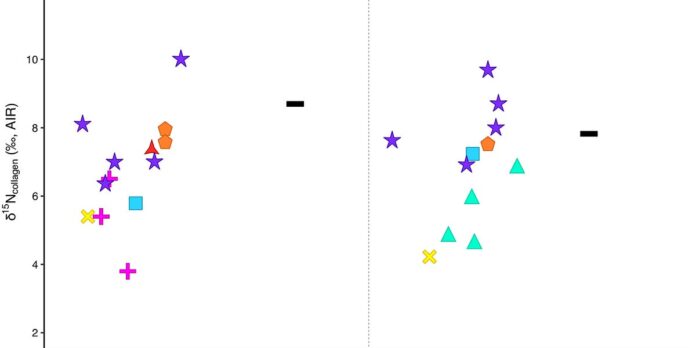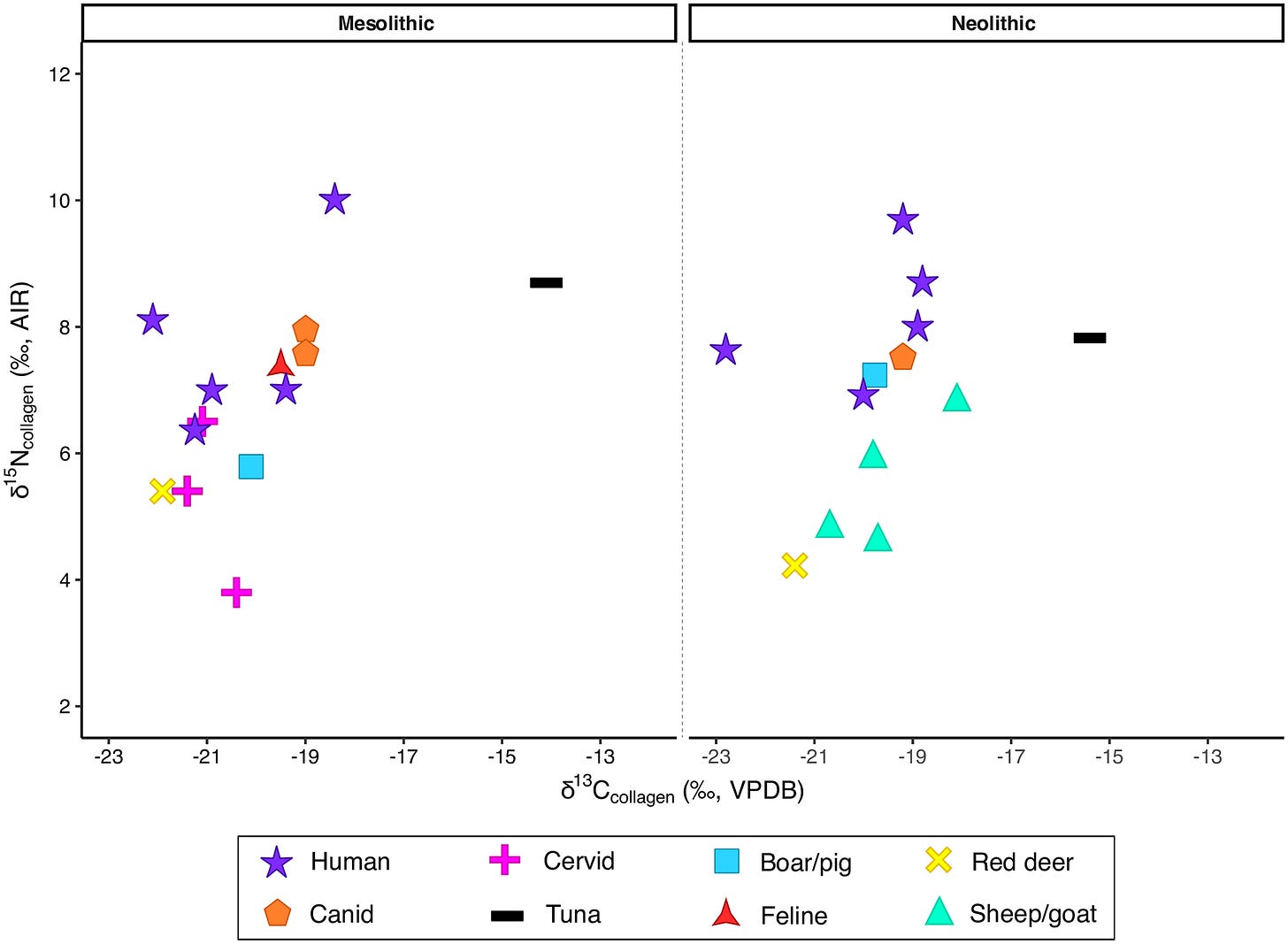Franchthi Cave, nestled in the Peloponnesian peninsula of Greece, has been a silent witness to 40,000 years of human history. It serves as a critical archaeological site for understanding the transition from Mesolithic hunter-gatherers to Neolithic agriculturalists. A recent study published in PLOS ONE takes a groundbreaking approach to unraveling the dietary patterns of its inhabitants, using compound-specific stable isotope analysis (CSIA) to bring clarity to questions about how these ancient communities lived and adapted.
The study, led by Valentina Martinoia and colleagues, challenges previous notions about Mesolithic and Neolithic diets in the region. While earlier isotope research suggested a primarily terrestrial diet, the use of CSIA sheds light on the subtle complexities of ancient subsistence strategies, revealing occasional marine influences alongside a dominant reliance on terrestrial resources.
Traditional isotopic analysis often paints broad strokes about ancient diets but falls short in disentangling the nuances of dietary composition. CSIA offers a more refined lens by examining individual amino acids, such as phenylalanine and valine, which serve as dietary biomarkers. This approach minimizes ambiguities, allowing researchers to distinguish between protein sources with remarkable precision.
“CSIA-AA provides a comprehensive and high-resolution evaluation of the dietary contributions to tissue isotopic values,” the authors explain, highlighting its capacity to overcome the limitations of bulk isotope methods.
The findings at Franchthi Cave reaffirm the predominance of terrestrial diets during both the Mesolithic and Neolithic periods, dominated by animal protein and C3 plants. Interestingly, the isotopic signatures also hint at sporadic use of marine resources like fish and seaweed, particularly during the Neolithic.
The Mesolithic layers of Franchthi reveal a surprising story. Despite proximity to the Mediterranean, where marine resources were abundant, the isotopic data show little evidence of marine food consumption. Deer, boar, and land snails dominated the diet, reflecting a focus on terrestrial hunting and foraging.
However, sporadic consumption of marine mollusks and shallow-water fish is suggested by faunal remains. Yet, the isotopic signatures of human bones do not strongly reflect these inputs, pointing to their limited dietary importance.
With the advent of the Neolithic, Franchthi’s inhabitants embraced agriculture. Domesticated species like sheep, goats, and pigs became staples, supplemented by cultivated grains and legumes. Interestingly, the isotopic data suggest that some livestock consumed seaweed, likely due to grazing near coastal areas or intentional supplementation. This finding adds an intriguing layer to understanding early agricultural practices.
The study also reveals slight dietary shifts among Neolithic individuals, with isotopic signatures occasionally indicating small contributions from marine resources. This nuance suggests a more varied diet than previously thought, shaped by both ecological and cultural factors.
While the study is meticulous in its methodology, it is not without limitations. The sample size of human remains, particularly from the Upper Mesolithic, is modest, and the analysis does not encompass all periods of occupation at Franchthi. Moreover, the absence of data from certain dietary sources, such as specific fish species, limits definitive conclusions about marine consumption.
“The lack of data for marine-specific isotopes underscores the need for more comprehensive analyses in future studies,” the authors acknowledge.
The findings also raise broader questions about cultural practices. Why did Mesolithic foragers underexploit marine resources despite their availability? Was this a matter of ecological limitation or cultural preference? The answers may lie in a combination of environmental factors and the social dynamics of food consumption.
The isotopic revelations from Franchthi Cave provide a window into the lives of its ancient inhabitants, showing a complex interplay of ecological adaptation, dietary choices, and cultural evolution. The study underscores the power of modern techniques like CSIA in rewriting narratives about human prehistory.
Franchthi’s story is not just one of survival but of innovation, resilience, and the enduring relationship between humans and their environment. As researchers continue to dig deeper into its layers, the cave will undoubtedly yield more secrets, enriching our understanding of the Mediterranean’s prehistoric past.
-
“Marine Resource Exploitation in the Mesolithic”
A comparative study of coastal diets across Europe.
Read more -
“Transitions in Prehistoric Diets”
Exploring isotopic evidence from the Mesolithic-Neolithic transition.
Read more -
“Neolithic Agricultural Practices and Diets”
Insights from isotope studies on early farmers.
Read more


